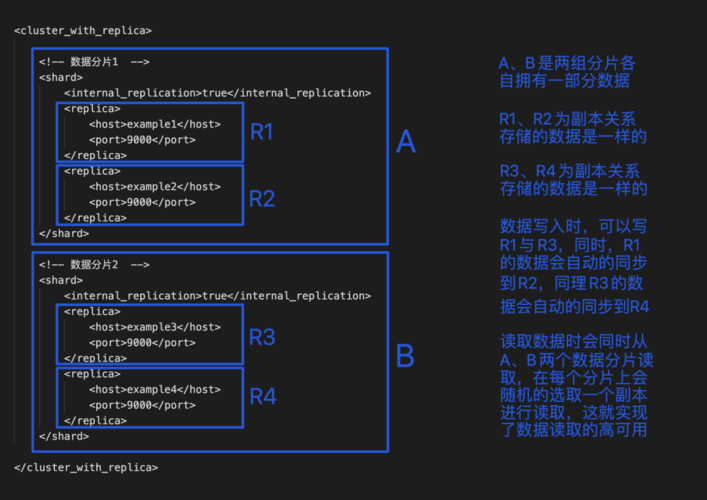大数据英语
Introduction to Big Data: English Translation
Big Data refers to extremely large datasets that may be analyzed computationally to reveal patterns, trends, and associations, especially relating to human behavior and interactions. Big Data has become a crucial asset for organizations and businesses as it can provide valuable insights into customer behavior, market trends, and operational efficiency.
1. Volume: Big Data involves a vast amount of information that is generated and collected at an unprecedented scale. This includes data from sources such as social media, sensors, and business transactions.
2. Variety: Big Data comes in various formats, including structured data (e.g., databases), unstructured data (e.g., text files), and semistructured data (e.g., XML files). Managing this diverse range of data types is a key challenge in Big Data analysis.
3. Velocity: Big Data is generated at high speeds and must be processed rapidly to extract meaningful insights in realtime. The ability to analyze and act on data quickly is essential for leveraging its full potential.
1. Hadoop: An opensource framework that allows for the distributed processing of large datasets across clusters of computers. Hadoop is designed to scale from a single server to thousands of machines, making it a valuable tool for handling Big Data processing tasks.
2. MapReduce: A programming model for processing and generating large datasets in parallel across distributed computing clusters. MapReduce divides the work into small tasks that can be executed across multiple nodes, enabling efficient processing of Big Data.
3. Machine Learning: A branch of artificial intelligence that focuses on developing algorithms and statistical models to enable computers to learn from and make predictions or decisions based on data. Machine learning plays a crucial role in extracting insights from Big Data and identifying patterns that may not be apparent through traditional analysis methods.

1. Data Privacy and Security: With the proliferation of Big Data, concerns about the privacy and security of personal information have become more pronounced. Organizations must implement robust data protection measures to safeguard sensitive data from unauthorized access and breaches.
2. Data Quality: Ensuring the accuracy, completeness, and consistency of Big Data is essential for generating reliable insights. Data cleaning and validation processes are crucial for maintaining data quality and integrity throughout the analysis process.
3. Scalability: As the volume of data continues to grow exponentially, organizations need scalable infrastructure and technologies to handle the increasing demand for storage and processing capabilities. Scalability is a key factor in effectively managing and analyzing Big Data.
Big Data presents significant opportunities for organizations to gain valuable insights and drive innovation. By leveraging advanced technologies and analytical techniques, businesses can harness the power of Big Data to enhance decisionmaking, improve operations, and gain a competitive edge in today's datadriven world.
标签: 初识大数据英语翻译怎么说 大数据英语短文 大数据 英语翻译
相关文章
-
景顺成长,探索中国城市化进程中的绿色发展之路详细阅读

在21世纪的今天,城市化已成为全球范围内不可逆转的趋势,中国,作为世界上人口最多的国家,其城市化进程尤为引人注目,随着经济的快速发展,城市化带来的问题...
2025-10-01 198
-
深度解析,股票000777中核科技的投资价值与未来展望详细阅读

在当今的投资市场中,股票投资无疑是一个热门话题,而在众多股票中,股票代码为000777的中核科技因其独特的行业地位和发展潜力,吸引了众多投资者的目光,...
2025-09-30 240
-
深圳证券交易所交易规则,投资市场的指南针详细阅读

亲爱的读者,想象一下,你正站在一个繁忙的十字路口,四周是熙熙攘攘的人群和川流不息的车辆,每个人都在按照交通规则行事,红灯停,绿灯行,黄灯亮起时,大家会...
2025-09-30 200
-
基金202005,揭秘投资背后的逻辑与策略详细阅读

在投资的世界里,基金是一种备受瞩目的投资工具,它以其多样化的投资组合、专业的管理团队和相对稳定的收益吸引了众多投资者的目光,我们将深入探讨基金2020...
2025-09-30 193
-
探索中国平安行销,策略、实践与未来趋势详细阅读

在当今竞争激烈的市场环境中,行销策略对于企业的成功至关重要,中国平安,作为中国领先的金融服务集团,其行销策略不仅在国内市场上取得了显著成效,也为全球行...
2025-09-29 200
-
深入解析数码视讯股票,投资价值与市场前景详细阅读

在当今数字化时代,数码视讯行业作为信息技术领域的重要组成部分,正逐渐成为投资者关注的焦点,本文将深入探讨数码视讯股票的投资价值与市场前景,帮助投资者更...
2025-09-29 241
-
悦康药业,创新与责任并重,引领健康未来详细阅读

在当今这个快节奏、高压力的社会中,健康成为了人们越来越关注的话题,而在医药行业中,有这样一家企业,它以创新为驱动,以责任为担当,致力于提供高质量的药品...
2025-09-29 192
-
深度解析,定向增发股票背后的资本游戏与投资策略详细阅读

在资本市场的棋盘上,股票的每一次变动都牵动着投资者的神经,定向增发作为一种特殊的融资方式,因其能够为上市公司带来资金的同时,也为投资者提供了新的投资机...
2025-09-29 196
